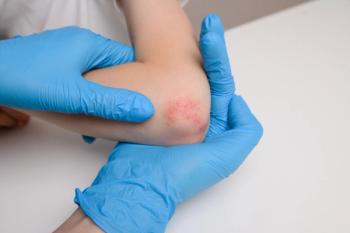
- Drug Topics December 2022
- Volume 166
- Issue 12
New Approaches in Psoriasis and Psoriatic Arthritis Treatment
Understanding the relationship between psoriasis and psoriatic arthritis can help.
The patient journey and the relationship between psoriasis and psoriatic arthritis were key points in a presentation by Bruce E. Strober, MD, PhD, at the 2022 Fall Clinical Dermatology Conference, held in Las Vegas, Nevada.1
Strober began by giving a quick review of psoriasis as a systemic inflammatory disease that is not just limited to the skin. “Most patients have a lot of inflammation affecting other tissues, and that’s important because we need to control systemic inflammation for patients with psoriasis,” said Strober, a clinical professor of dermatology at Yale University School of Medicine in New Haven, Connecticut, and scientific codirector of the CorEvitas Psoriasis Registry. In psoriatic arthritis, the ligaments and tendons are affected just as much as the joints. Stiffness, pain, and achiness are other common symptoms of the disease. In addition, it is important to consider whether the arthritis is peripheral or axial psoriatic arthritis. Axial diseases affect up to half of patients with psoriatic arthritis and are associated with neck and lower back pain.
Once of the main goals of treating psoriasis or psoriatic arthritis is to achieve skin clearance, according to Strober. If providers can completely clear a patient’s skin, it is much easier to manage symptoms than if only 80% to 90% of the skin is cleared. Complete clearance also means patients are more likely to benefit from no psoriasis symptoms and no impairment to their health-related quality of life.
Over 30% of patients with psoriasis will also develop psoriatic arthritis. For those patients, the time to the onset of psoriatic arthritis is between 7 and 12 years, and the prevalence of psoriatic arthritis increases with psoriasis duration. One of Strober’s most important takeaways from the session was that axial disease is an important consideration for individuals with psoriasis and psoriatic arthritis. Axial disease is present in 20% to 50% of patients with psoriatic arthritis and may involve the spine, and it often goes undiagnosed.
“Axial disease affects the vertebra, specifically the neck, lower back, and the sacroiliac. It’s different [from] a disease that affects the periphery, such as the ankles. The reason why we know that is because certain therapeutics preferentially treat only a peripheral but not an axial [disease],” Strober said.
Moving on to therapeutic options, Strober believes the current targeted therapeutics and targeted immunosuppressants on the market for psoriasis and psoriatic arthritis are safe and tolerable. He mentioned that dermatologists are aware that some biologics are not intended for certain patients. Those with inflammatory bowel disease, for example, should not receive IL-17 inhibitors, and patients with certain forms of cancer should avoid JAK inhibitors. However, most patients with psoriatic disease can receive agents from the different drug classes. Rheumatologists strongly recommend IL-17 inhibitors and tumor necrosis factor (TNF) inhibitors for patients with axial disease; however, IL-23 inhibitors are not recommended for those with axial disease. Strober emphasized that patients with axial psoriatic arthritis need to receive an IL-17 or TNF inhibitor to effectively treat their symptoms and prevent severe disease progression.
Reference
1. Strober B. Psoriatic disease: defining a new era for patients and physicians. Presented at: 2022 Fall Clinical Dermatology Conference; October 20-23, 2022; Las Vegas, NV.
Articles in this issue
almost 3 years ago
2022 Top News from Drug Topicsabout 3 years ago
Treating Skin Cancers in the Immunotherapy Eraabout 3 years ago
What’s New in Acne and Rosacea?about 3 years ago
A Study of Immune Checkpoint Inhibitors and Complication Ratesabout 3 years ago
Evaluating Chronic Itch and Quality of Lifeabout 3 years ago
Biosimilar Uptake Increases After Changes to EHRabout 3 years ago
Mental Health Telemedicine Barriers Spur Call for Reformabout 3 years ago
How Drug Shortages Are Prevented by the FDANewsletter
Pharmacy practice is always changing. Stay ahead of the curve with the Drug Topics newsletter and get the latest drug information, industry trends, and patient care tips.















































































































